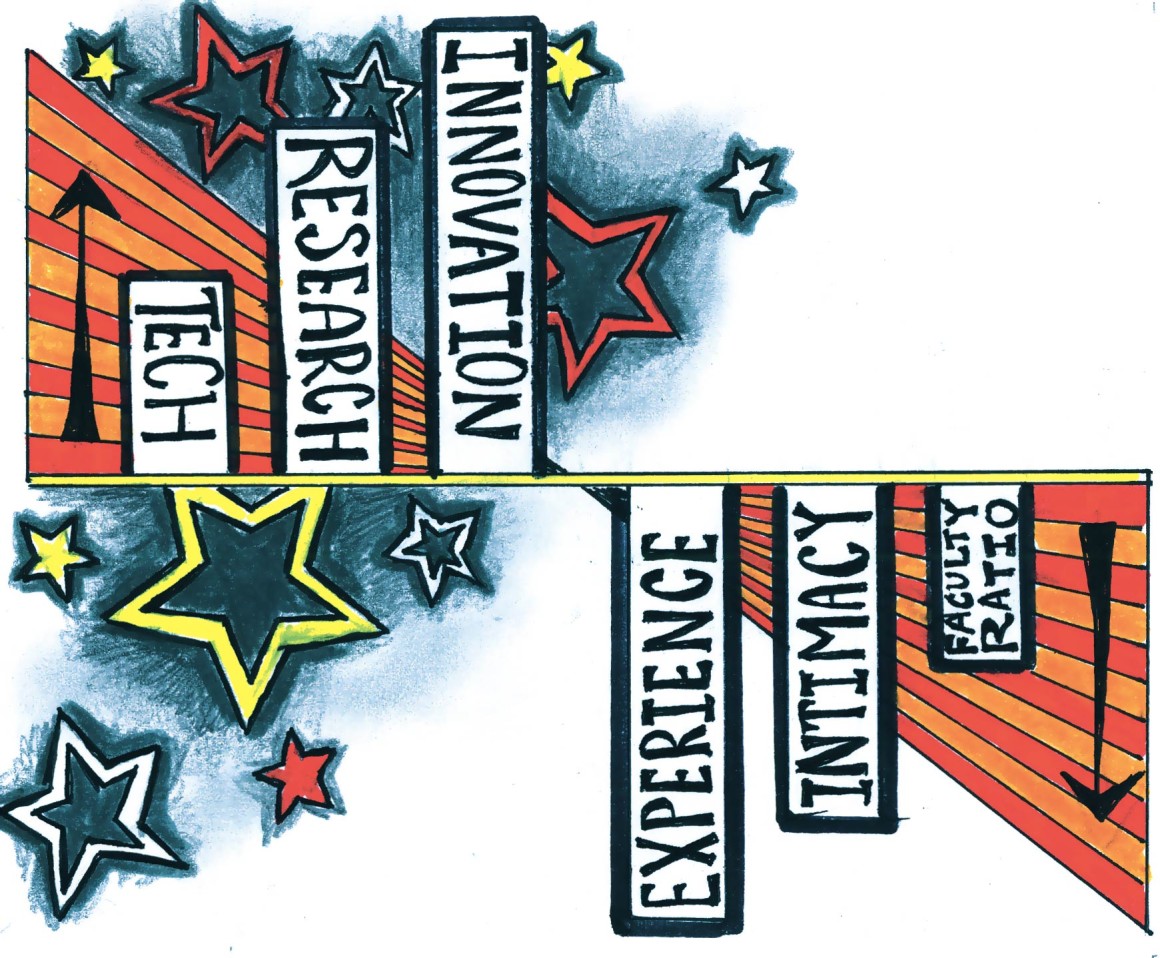
U of C’s corporate branding is for investors, not students
Last week, University of Calgary president Elizabeth Cannon took the stage in MacHall to deliver this year’s community report. The event was advertised heavily around campus and open to students. But as the buzzwords flew and free apples were crunched, something was missing. For all of the suits and ties in the audience, there were barely any students. Because this whole thing — the Community Report, the corporate branding, the talk of “fueling transformational change” — isn’t for students at all.
Cannon dropped several important sounding statistics throughout the community report that showed off how well the U of C did in the past year. But most of these statistics weren’t actually all that impressive. For example, the U of C is apparently one of Alberta’s top 70 employers — but so are SAIT, NAIT and Bow Valley College.
Other statistics were even more misleading, such as Cannon’s claim that the U of C will be hiring 100 new professors. This tidbit is a lot less impressive when you consider that only 25 of these professors will be filling new positions, with the remaining 75 replacing professors who have quit or retired.
And some statistics were just confusing, like the claim that out of 44 metrics, the U of C can compare itself to other schools using 33, 22 of which the U of C is in the top five. What does that even mean?
Well, it doesn’t really mean anything. These numbers and statistics aren’t supposed to be actual benchmarks for charting how well the U of C is doing as a school, or how its students are performing. They’re supposed to sound good, and to make the U of C look like it has its shit together. It’s an act meant to lure in as many donors and investors as possible.
Many of the programs and initiatives launched by the U of C exist solely for this reason. Eyes High makes the university seem research-focused to organizations that fund grants and awards. High-performing students are encourage to volunteer as glorified support staff during U of C events so it looks like every student at the school is a genius. Even UCalgary Strong was only started as a public relations response to the Brentwood tragedy last year.
This doesn’t mean that these programs are bad, or that they shouldn’t exist. There is no doubt that many students have benefitted greatly because of them. But they weren’t put in place for the good of students — if anything, that was just a pleasant side effect. They’re a part of a corporate brand strategy.
If the U of C really did do all of this for students, that community report would have looked a lot different. It would have addressed how the U of C routinely polls terribly in student satisfaction surveys and how it’s started to fall in Maclean’s yearly university rankings. Attention would have been paid to a dwindling post-university job market and rising levels of student debt. A real mental health plan would have been laid out, instead of vague promises about there maybe being one in the future. Student problems would have been addressed and discussed, instead of being conveniently ignored.
Instead, the U of C has made a different choice — to prioritize investors over students, and to act like a business instead of a public institution. And for the most part, that doesn’t affect students’ lives very much.
But the next time you hear about the U of C’s student retention rates or about their exciting new research programs, just remember that you’re more than a customer here — you’re also the product.
Sean Willett, Gauntlet Editorial Board
